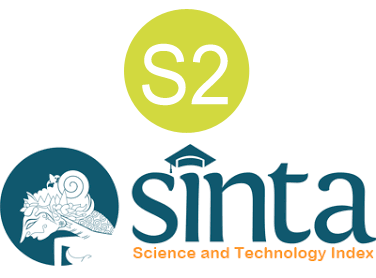Astrologi Hindu dalam Dinamika Budaya Pertanian Subak
Studi Etnografi di Kabupaten Tabanan
DOI:
https://doi.org/10.37329/jpah.v9i3.4304Keywords:
Subak, Wariga, Hindu Astrology, Local EpistemologyAbstract
The Subak agricultural system in Bali functions not only as a traditional irrigation structure but also as an integration of ecological knowledge and Hindu spirituality, particularly through the use of the Wariga astrological system. In the context of modernization and social transformation, this astrological practice is increasingly challenged, raising concerns over the sustainability of local cultural knowledge. This study aims to explore the role and transformation of Hindu astrology in the agricultural culture of Subak communities in Tabanan Regency, as well as to examine community-driven efforts to revitalize such traditional knowledge. Using an ethnographic approach, data were collected through participant observation, in-depth interviews, document analysis, and focus group discussions with local farmers and customary leaders. The findings reveal that Wariga remains a significant epistemological framework for determining planting schedules and agricultural rituals, despite the ongoing hybridization with modern calendrical systems. Adaptation strategies such as the digitalization of Balinese calendars, the involvement of customary institutions, and cultural education initiatives have become essential in maintaining the relevance of Wariga. This research highlights the importance of recognizing local epistemologies in sustainable development and the need to integrate spirituality, traditional knowledge, and agricultural policy. This research confirms the importance of integrating local epistemologies in sustainable agricultural policy, while enriching non-Western scientific discourse.
References
Ardiyasa, I. N. S. (2021). Mistisisme Nusantara Ala Ayuning Dewasa dalam Usada Bali. Prosiding Seminar Nasional Jurusan Brahma Widya: Mistisisme Nusantara.
Bhattacarya, W., Ketut Donder, I., & Wayan Redi, dan I. (2019). Teologi Hari: Analisis Teologi Kritis Terhadap Waktu Dalam Lontar Aji Swamaṇḍala. Jurnal Penelitian Agama Hindu, 3(4), 286–294.
Bustan, F., Mahur, A., & Nau, A. S. T. (2020). Karakteristik Dan Dinamika Sistem Pertanian Lahan Kering Dalam Kebudayaan Manggarai. Jurnal Lazuardi, 3(1).
Fatmawati, Akmal, A. M., & Basir, F. R. (2022). Khazanah Tradisi Astronomi dan Astrologi Masyarakat Sulawesi Selatan. Al-Marshad: Jurnal Astronomi Islam Dan Ilmu-Ilmu Berkaitan, 8(2), 136–150.
Harding, S. (2011). The Postcolonial Science And Technology Studies Reader. Duke University Press.
Harnika, N. N. (2019). Wariga Sebagai Media Komonikasi Dalam Penentuan Dewasa Pada Upacara Perkawinan Umat Hindu Di Kota Mataram. GARA, 13(1), 1–12.
Ho, Y., Tarigan, B. H., Dharmawan, A. H., Tjondronegoro, S., & Suradisastra, K. (2013). Persaingan Akses Sumber Daya Air Di Yeh Ho, Tabanan, Bali. Jurnal Agro Ekonomi, 3(2), 143–159.
Kadek, N., Utami, Y., & Trisna, W. (2020). Kajian User Interface Pada Website Kalender Bali. Prosiding Seminar Nasional Desain Dan Arsitektur (SENADA), 3, 539–545.
Martins, P. (2023). A Concise History of Hindu Astrology and Indian Spirituality. Scholars Journal of Arts, Humanities and Social Sciences, 11(02), 33–36.
Padet, I. W., & Krishna, I. B. W. (2018). Falsafah Hidup Dalam Konsep Kosmologi Tri Hita Karana. Genta Hredaya, 2(2), 37–43.
Pebriani, N. K. A., & Subagia, I. N. (2019). Wariga, Kearifan Lokal Untuk Memupuk Kedisiplinan Anak Dalam Pendidikan Karakter. Prosiding Nasional, 150-153.
Prawira, I. P. C., Sasmita, G. M. A., & Bayupati, I. P. A. (2015). Pengembangan Aplikasi “Kalender Saka Bali” pada Sistem Operasi Machintos. Merpati, 3(2).
Putri, L., & Yudiana, I. kadek. (2024). Dinamika Sosial Dan Budaya Dalam Tradisi Metik Pari. Jurnal Sangkala, 3(2), 78–89.
Ramdhani, F. Z. (2020). Eksistensi Kalender Bali dalam Kultur Sosial Masyarakat Multireligius Bali. Religious: Jurnal Studi Agama-Agama Dan Lintas Budaya, 4(2), 81–92.
Ranem, N., Sudiana, G. N., & Sutarya, G. (2024). Paniwak Dewasa Sebagai Penentu Dewasa Ayu Di Desa Adat Selulung. Dharmasmerti, 24(1), 128–143.
Susantio, D. (2014). Astrologi Sebagai Ilmu Bantu Epigrafi : Sebuah Pemikiran. Balai Arkeologi Yogjakarta, 85–96.
Sutarya, I. G. (2017). Astrologi Bali sebagai Dialog Lintas Agama dalam Pariwisata Spiritual. Jurnal Teologi, Filsafat, Yoga Dan Kesehatan Fakultas Brahma Widya, 4(1), 1–6.
Untara, I. M. G. S. (2019). Kosmologi Hindu Dalam Bhagavadgītā. Jñānasiddhânta. Jurnal Prodi Teologi Hindu STAHN Mpu Kuturan Singaraja, 1(1), 19–27.
Untara, I. M. G. S., & Krishna, I. B. W. (2023). Ajaran Tattwa Dalam Tutur Medang Kemulan. Jurnal Ilmu Agama, 6(4), 397–412.
Wilson, C. (2001). Decolonizing Methodologies: Research and Indigeneous Peoples. Social Policy Journal of New Zealand, 214–218.
Windia, W., Pusposutardjo, S., Sutawan, N., Sudira, P., & Arif, S. P. (2005). Transformasi Sistem Irigasi Subak Yang Berlandaskan Konsep Tri Hita Karana. Soca: Jurnal Sosial Ekonomi Pertanian, 5(2), 1–15.
Downloads
Published
How to Cite
Issue
Section
License
Copyright (c) 2025 I Ketut Wartayasa

This work is licensed under a Creative Commons Attribution-ShareAlike 4.0 International License.
An author who publishes in the Jurnal Penelitian Agama Hindu agrees to the following terms:
- Author retains the copyright and grants the journal the right of first publication of the work simultaneously licensed under the Creative Commons Attribution-ShareAlike 4.0 License that allows others to share the work with an acknowledgement of the work's authorship and initial publication in this journal
- Author is able to enter into separate, additional contractual arrangements for the non-exclusive distribution of the journal's published version of the work (e.g., post it to an institutional repository or publish it in a book) with the acknowledgement of its initial publication in this journal.
- Author is permitted and encouraged to post his/her work online (e.g., in institutional repositories or on their website) prior to and during the submission process, as it can lead to productive exchanges, as well as earlier and greater citation of the published work (See The Effect of Open Access).
Read more about the Creative Commons Attribution-ShareAlike 4.0 Licence here: https://creativecommons.org/licenses/by-sa/4.0/.








